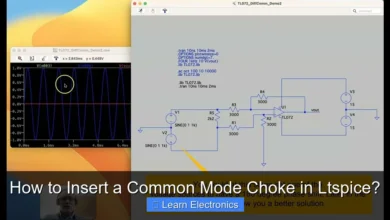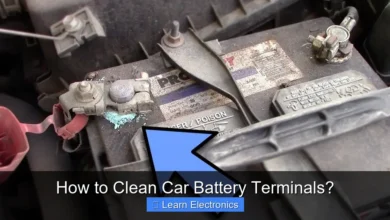Why Can I Hear Noises from Power Supplies?

Why can I hear noises from power supplies? This common phenomenon primarily stems from a physical effect known as coil whine or the piezoelectric effect, where electrical current causes components to vibrate mechanically at an audible frequency. These vibrations, though often minor, can become noticeable depending on the component’s design, load conditions, and your environment. Understanding these underlying principles is key to diagnosing and potentially mitigating the sounds emanating from your electronic devices.
The sounds you hear from a power supply, ranging from a faint hum to a high-pitched squeal, are typically not a cause for immediate alarm but indicate an electromechanical interaction within the power delivery system. This article delves into the various reasons behind these noises, exploring their sources, influencing factors, and what you can do about them.
Quick Answers to Common Questions
What kind of noise am I likely to hear from power supplies?
You’ll often hear a low hum, a distinct buzzing, or sometimes a high-pitched whine. These sounds are typically mechanical vibrations or electrical phenomena happening within your power supplies.
Is it normal for my power supplies to make noise?
A faint hum or light buzz is often perfectly normal and harmless for many power supplies, due to the way their internal components operate. However, a sudden loud noise or a very high-pitched whine might signal an issue.
What specifically causes these noises inside power supplies?
The main culprits are vibrating components like coils (often called “coil whine”) or capacitors, and sometimes rapid expansion and contraction of materials due to electrical current (magnetostriction). Don’t forget, it could also just be the cooling fan in your power supplies working hard!
📑 Table of Contents
- Understanding the “Why Can I Hear Noises from Power Supplies?” Phenomenon
- Common Sources of Audible Noise in Power Supplies
- Factors Influencing Noise Levels
- Troubleshooting and Mitigating Power Supply Noises
- Summary of Common Power Supply Noise Types and Causes
- The Impact of Noise and When to Be Concerned
Understanding the “Why Can I Hear Noises from Power Supplies?” Phenomenon
The question of why you can hear noises from power supplies is deeply rooted in the physics of electromagnetism and material properties. It’s not usually an electrical fault in the traditional sense, but rather an undesirable byproduct of normal operation.
The Basics of Coil Whine
Coil whine is arguably the most common culprit behind power supply noises. It originates from electromagnetic coils, such as inductors and transformers, which are vital components in power supplies for filtering and regulating current. When current passes through these coils, it generates magnetic fields. If the current fluctuates rapidly (as it does in switching power supplies), these magnetic fields change, causing the coil windings and sometimes the surrounding core material to vibrate. If these vibrations fall within the human hearing range (typically 20 Hz to 20 kHz), we perceive them as a buzzing, humming, or high-pitched whine.
Piezoelectric Effect in Components
While less common than coil whine, the piezoelectric effect can also contribute to audible noise. Certain ceramic capacitors, particularly those used in switching power supplies, can exhibit piezoelectric properties. This means they convert mechanical stress into an electrical charge and, conversely, an applied electric field can cause them to deform mechanically. When these capacitors are subjected to rapidly changing voltages, they can expand and contract slightly, producing a faint clicking or buzzing sound. This effect is often amplified when capacitors are mounted on a PCB, transferring vibrations to the board itself.
Common Sources of Audible Noise in Power Supplies
Beyond the fundamental physics, specific components are more prone to generating noise. Identifying these can help pinpoint the exact origin of the sound.
Inductors and Transformers (Coil Whine)
These are the primary components responsible for classic coil whine. They are designed with wire windings around a magnetic core to store energy or transform voltages. The strength of the magnetic field and the mechanical coupling of the windings to the core and the surrounding PCB dictate the intensity of the vibrations and, thus, the noise. Loosely wound coils or insufficient potting material (an epoxy resin used to secure components) can exacerbate this.
Capacitors
As mentioned, ceramic capacitors, especially multi-layer ceramic capacitors (MLCCs), can be a source of noise due to the piezoelectric effect. Electrolytic capacitors, while generally not piezoelectric, can sometimes hum if their internal electrolyte dries out or if they are failing, leading to increased impedance and potential ripple current issues that might cause other components to whine more.
Fans (Mechanical Noise)
While not an electrical noise from the power delivery itself, the cooling fan within a power supply is a very common source of sound. This is mechanical noise and can range from a steady hum to a grinding or rattling sound. Causes include:
- Bearing wear: Over time, the bearings in a fan can wear out, leading to increased friction and noise.
- Dust accumulation: Dust and debris can build up on fan blades, unbalancing them and causing vibration.
- Motor issues: The fan motor itself can develop issues, leading to uneven rotation and noise.
- RPM fluctuations: Fans that constantly speed up and slow down in response to temperature changes can create a fluctuating noise profile.
Factors Influencing Noise Levels
The intensity and characteristics of power supply noise aren’t constant; several factors can affect them.
Load Fluctuations and Power Delivery
One of the biggest influencers of coil whine is the electrical load placed on the power supply. Modern power supplies often use switching regulators that rapidly switch on and off to maintain a stable output voltage. When the load on the power supply changes (e.g., when a CPU or GPU suddenly demands more power during gaming or intensive tasks), the switching frequency or duty cycle adjusts. These changes can excite different resonant frequencies in the coils and capacitors, making the noise more prominent or changing its pitch. Light loads can sometimes be worse than heavy loads, as some power supplies enter different operating modes (like burst mode) to maintain efficiency, which can introduce specific audible frequencies.
Component Quality and Design
The quality of the components used and the overall design of the power supply play a significant role. Higher-quality inductors often feature better potting or encapsulation to dampen vibrations. Manufacturers can also select materials and designs that minimize the piezoelectric effect in capacitors. A well-designed power supply will consider acoustic noise reduction during its development, using techniques such as:
- Using ferrite beads or better shielding.
- Optimizing component placement to prevent sympathetic vibrations.
- Selecting components with inherent low noise characteristics.
Age and Wear
Over time, components can degrade. The potting compound used to secure inductor windings might crack or dry out, allowing for greater vibration. Fan bearings wear, collecting dust and leading to increased mechanical noise. Older power supplies, especially those that have been subjected to heat and stress, are more likely to develop audible issues.
Troubleshooting and Mitigating Power Supply Noises
If you’re bothered by power supply noise, there are several steps you can take to identify the source and potentially reduce it.
Identifying the Source
The first step is to confirm the noise is indeed coming from the power supply and not another component like a CPU cooler or GPU. Carefully listen to your system. If you have a modular power supply, you might try unplugging non-essential peripherals one by one to see if the load change affects the noise. For coil whine, you might notice the noise changes when you open an application, scroll a web page, or run a benchmark.
- Mechanical Noise: If it’s a grinding or rattling, it’s likely the fan.
- High-pitched Whine/Buzz: Points to coil whine from inductors or capacitors.
Practical Solutions for Quieter Operation
Here are some tips to address noise issues:
- Clean the Fan: If it’s fan noise, carefully open the power supply (if you are comfortable and it’s safe to do so, always unplug from mains power!) and use compressed air to clean dust from the fan blades and grille. Never force a fan to spin while cleaning. Consider replacing the fan if cleaning doesn’t help and you have the technical expertise.
- Stress Test and Burn-in: Sometimes, new power supplies exhibit coil whine that lessens after a “burn-in” period of continuous use. Running a stress test (like FurMark or Prime95) for a few hours can sometimes settle the components.
- Optimize Load: Ensure your power supply is appropriately sized for your system. An undersized PSU might be constantly straining, while an extremely oversized one might operate inefficiently at very light loads, sometimes contributing to whine.
- Isolate Vibrations: Ensure the power supply is securely mounted in its chassis. Rubber grommets or anti-vibration pads can help prevent vibrations from transferring to the case.
- Graphics Card Settings: For GPU-induced coil whine (often confused with PSU whine), enabling V-Sync or setting a frame rate limiter can sometimes reduce the load fluctuations that trigger the noise.
- Consider Component Upgrade: If the noise is persistent and bothersome, upgrading to a higher-quality power supply with better components and noise dampening can be the most effective solution.
When to Consider Replacement
While many noises are harmless, persistent loud grinding from a fan, a strong burning smell, or intermittent power delivery issues accompanied by noise are signs of potential failure. In such cases, replacing the power supply promptly is crucial to prevent damage to other components in your system.
Summary of Common Power Supply Noise Types and Causes
This table provides a quick overview of the most common noises you might hear and their likely origins.
| Noise Type | Likely Source | Primary Cause | Potential Action |
|---|---|---|---|
| High-pitched Whine / Squeal | Inductors, Transformers, Ceramic Capacitors | Coil Whine (electromagnetic vibration), Piezoelectric Effect | Stress test, frame rate limiting (GPU), component quality check |
| Buzzing / Humming | Inductors, Transformers | Coil Whine, looser windings, specific load conditions | Ensure proper loading, check mounting, burn-in period |
| Grinding / Rattling | Cooling Fan | Worn bearings, dust accumulation, motor imbalance | Clean fan, inspect for damage, replace fan/PSU |
| Clicking (faint, rapid) | Ceramic Capacitors | Piezoelectric effect, often under specific electrical conditions | Monitor if it worsens, often benign |
The Impact of Noise and When to Be Concerned
It’s important to differentiate between merely annoying noise and noise indicative of a problem. Not all sounds from power supplies are a call for alarm.
Is It Always a Problem?
In many cases, mild coil whine or a gentle fan hum is an inherent characteristic of the components and design, and not a sign of imminent failure. Many high-performance power supplies, particularly those pushing a lot of power, might exhibit some degree of coil whine under certain loads. It becomes a “problem” more from an acoustic comfort perspective than a functional one. If the noise is constant, very loud, or dramatically changes pitch or intensity without clear reason, then further investigation is warranted.
Health and Performance Implications
For most users, the primary impact of power supply noise is simply annoyance, disrupting concentration or the quiet enjoyment of their computer. However, severely misbehaving fans can lead to inadequate cooling, which can affect the longevity and performance of the power supply and potentially other system components. Electrical noises like coil whine, while not typically a sign of failure, can indicate minor inefficiencies or instabilities in power delivery. If the whine is exceptionally loud or accompanies system instability, it might be worth considering a replacement as a precaution.
Ultimately, a reliable power supply should operate quietly within reasonable limits. Understanding the causes of these noises empowers you to decide whether to live with them, try to mitigate them, or consider an upgrade.
Frequently Asked Questions
Why do power supplies make noise?
Power supplies can generate various noises due to the rapid switching of electrical components like capacitors and inductors. This switching is essential for converting AC power to DC power and regulating voltage, but it can induce vibrations that translate into audible sounds.
What kind of noises can I hear from power supplies?
You might hear a high-pitched whine, a buzzing sound, or even a clicking noise from power supplies. These sounds often come from components like coils (inductors) and transformers vibrating at audible frequencies, especially when under load or due to component aging.
Is it normal to hear noises from my power supplies, or should I be concerned?
A faint, consistent hum or whine can sometimes be normal, especially under load. However, if the noise from your power supplies is loud, sudden, changes drastically, or is accompanied by burning smells or system instability, it could indicate a problem that warrants further investigation or replacement.
Can I reduce the noise coming from my power supplies?
Often, yes. Ensuring proper ventilation can help reduce noise from overworked or hot components within power supplies. Sometimes, replacing older or low-quality power supplies with newer, higher-efficiency models designed for quiet operation can significantly minimize audible sounds.



